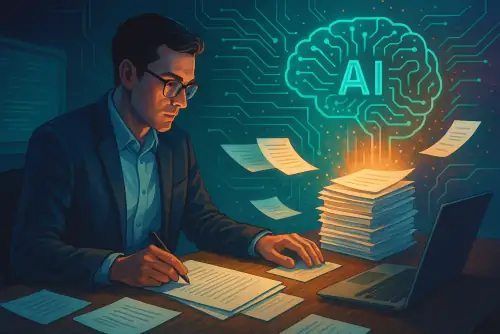Software documentation is the unsung hero of maintainable, scalable, and collaborative projects. Yet, it's often an afterthought, a tedious task relegated to the end of a development cycle, or worse, neglected entirely. The good news? Artificial Intelligence (AI) is stepping in to transform documentation from a dreaded chore into an intelligent, streamlined, and even automated process, greatly boosting developer productivity.
The Perennial Problem with Documentation
Why does documentation often fall by the wayside?
- Time Constraints: Developers are under pressure to deliver features, and documentation can feel like a secondary priority.
- Perceived Drudgery: Writing and maintaining documentation can be repetitive and less engaging than coding.
- Keeping it Current: As code evolves, documentation quickly becomes outdated if not meticulously maintained, leading to mistrust and disuse.
- Varying Quality: The clarity and usefulness of documentation can differ wildly depending on the writer.
This neglect leads to significant hidden costs: increased onboarding time for new developers, difficulty in troubleshooting (a pain point AI is also addressing in debugging), and a higher likelihood of introducing bugs when modifying poorly understood code.
How AI is Revolutionizing Software Documentation
AI offers a suite of tools and techniques to alleviate these pain points:
Automated Code Commenting & Summarization:
- AI tools can analyze code blocks or entire functions and automatically generate descriptive comments and summaries, explaining the purpose, parameters, and return values. This is a step beyond traditional linting and can be seen as a form of AI pairing for developers.
- This ensures a baseline level of documentation even for code written in a hurry.
Generating API Documentation:
- By analyzing API endpoints, request/response schemas, and code annotations (like JSDoc or Swagger/OpenAPI comments), AI can auto-generate comprehensive and interactive API documentation.
- This includes examples in various programming languages, parameter descriptions, and authentication details.
Creating Tutorials and How-To Guides:
- AI can assist in structuring and drafting initial versions of tutorials or user guides by understanding the core functionality of an application or library from its codebase or existing (even sparse) documentation.
Improving Readability and Clarity:
- AI-powered language tools can review existing documentation for grammatical errors, awkward phrasing, and lack of clarity, suggesting improvements to make it more accessible to a wider audience.
Keeping Documentation Synchronized with Code:
- Some advanced tools aim to detect when code changes might invalidate existing documentation, prompting developers to update it or even suggesting the necessary modifications.
Natural Language Querying of Codebases:
- Imagine asking your codebase, "How do I implement user authentication?" and getting a summarized explanation with relevant code snippets. AI is making this a reality, effectively turning the code itself into a form of living documentation. This concept is closely related to Retrieval Augmented Generation (RAG) used in AI tech bloggers.
"AI can transform your codebase from a silent monolith into a self-documenting entity, ready to explain its intricacies on demand."
Real-World Use Cases
- Open Source Project: An open-source library maintainer uses an AI tool to automatically generate docstrings for new Python functions, ensuring all contributions meet a minimum documentation standard and reducing the review burden.
- SaaS Company: A SaaS provider leverages AI to generate and update their public API documentation continuously. This ensures their customers always have access to accurate information, reducing support tickets related to API integration.
Best Practices for AI-Powered Documentation
- Start Small and Augment, Don't Fully Replace (Yet): Use AI to generate first drafts or fill gaps, but always have a human review and refine the output. Critical thinking and contextual understanding are still key.
- Provide Good Input: The quality of AI-generated documentation heavily depends on the quality of the input (well-commented code, clear function names, existing outlines).
- Define Your Audience: Tailor the AI's output (or your refinement of it) to the intended audience. Is it for internal developers, external API consumers, or non-technical users? The principles here are similar to those in designing user-friendly AI interfaces.
- Integrate into Your Workflow: Incorporate AI documentation tools into your CI/CD pipeline or development environment to make it a seamless part of the process, not an extra step. This ensures documentation keeps pace with agile development practices.
- Focus on High-Value Areas: Prioritize using AI for documenting complex or frequently changing parts of your system where manual efforts are most challenging.
The Shift Towards Living Documentation
AI is not just making documentation easier to write; it's changing its very nature. We are moving towards a future of "living documentation" – systems that are more dynamic, interactive, and intrinsically linked to the code they describe.
By embracing AI, development teams can finally conquer the documentation dilemma, fostering better collaboration, improving software quality, and freeing up developers to focus on innovation.
How are you using or planning to use AI for documentation in your projects? Share your strategies and favorite tools!

Comments